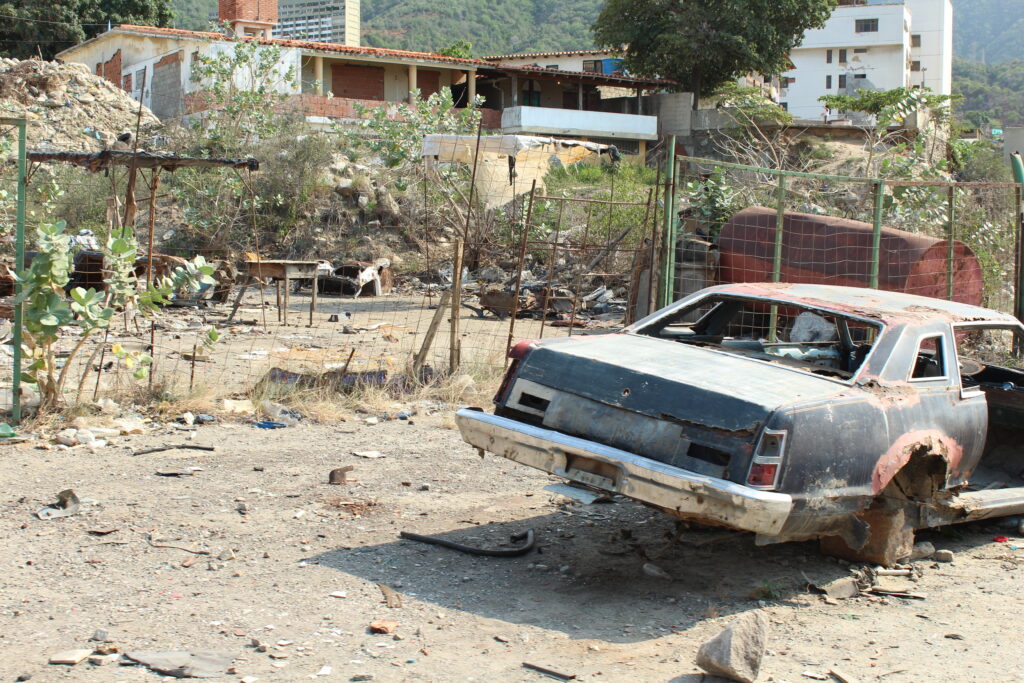Los Corales is one of the most densely-populated settlements along the coast, and so was gravely affected by the landslides. Before 1999, many of the houses in area were used as second homes, holiday lets, or time shares. After the disaster, some of these unoccupied buildings were taken by families whose homes had been destroyed by the landslides. This took place at a time when the idea of private property had come under question. The state sought to legalize the expropriation of dormant territories, while leading politicians encouraged the seizure of vacant lots, especially those belonging to individuals affiliated with the opposition.
Original home owners have attempted to ward off potential squatters with graffiti warnings that declare right of possession in spray paint. These have not always been effective. The new residents of these buildings, designed in modernist, colonial, and alpine styles, have made structural modifications that depart from the visions of their original architects. White-washed walls contrast with extensions made in red brick. Bay windows are sealed with breeze blocks and metal bars.
In other parts of Los Corales, new houses have been erected alongside the ruins of the old. Such interventions are infrequently subject to legal planning permissions or inspections. The densification of the population in this urban centre has placed pressures on infrastructural services like water and electricity. The overloading of electrical cables poses a fire hazard to local residents.
More dangers are represented by buildings that have been partially demolished, such as this one pictured below.
Listen to the story of this building’s failed demolition told by José Luis Corzo.


















